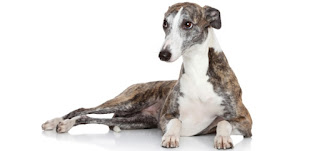I had my first dog when I was around eight years old. We got him in the winter and he was a Boggle (beagle Boston terrier mix). His name was Zephyr and he was my first pet. He had beautiful brindle fur and was incredibly strong even as a puppy. He was so full of energy and loved to run, he could run faster than any other dog I have seen. His love for running became a problem when he got out because he was impossible to catch. I learned so much about caring for dogs when we had him because I took him outside, watched over him, and learned what chocolate does to a dog when they steal a small piece on Halloween. I learned how to feed him, clean up after him, and how to discipline him. I did not only learn how to care for a pet with Zephyr, I learned how to deal with the loss of a pet with him. He was more than a teacher though, he was a loyal friend that was there through everything.
A few months before Zephyr died we got our second dog. He's a pug named Bamboo and the inspiration for this blog. Having two dogs for a short time was a lot of fun, but definitely had it's stressful moments. Bamboo was a mischievous puppy that loved to play and bite Zephyr. This issue persisted until the last day of Zephyr's life. He was getting old and was always very calm and loved to lay in his bed, but he was being bothered by this little puppy that just wanted to play all day. Aside from that, it was fun to have both dogs and have two of us take them out and I would always take Zephyr because he was my best friend.
Having Bamboo really saved our family when Zephyr died because he gave us something to care about after such a harsh loss. If we hadn't already had him it would have taken much longer for all of us to heal and even longer before we got another dog. Today, Bamboo is our number one just like Zephyr was for so many years. Learning to accept Zephyr's death taught me a lot in and of itself. I learned about how I deal with loss and how I need to grieve. I also learned how to come to terms with the fact that I would never take him on another walk, or hug him, or comfort him during a thunder storm.
Through all of this I have developed a deep love for dogs. As I have loved my pets over the years I have wanted to show people the love and happiness that can come from having a pet, especially a dog. You can learn from, love, laugh with, and cherish dogs. The purpose of this blog has been to share as much knowledge about dogs as I can and to show the importance of having pets and to explore why humans have such strong connections to these animals.
 |
| Zephyr |
 |
| Bamboo |




























